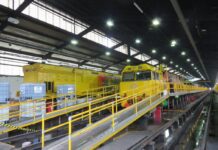By Ivan Kwan, Principal Environmental Engineer, Golder Associates
Holistic management of site contamination is often neglected when it comes to operational manufacturing sites.

Contamination is usually managed in the form of spill responses or compliance monitoring through license requirements. However, benefits can be achieved if the liabilities associated with contamination are proactively managed. This is particularly pertinent to ongoing operations or if divestiture is to be considered as an option.
It is important to firstly decide on a strategy for managing potential contamination and to ensure that an appropriate level of consultation is undertaken with relevant internal and external stakeholders.
The liabilities associated with contamination can be costly and effectively managing contamination takes planning, time and effort. Early planning to understand the magnitude of work required allows sufficient scope to manage cash flow.
Companies with multiple facilities may consider consolidating their contamination needs to maximise delivery efficiency. Managing site contamination issues on a “portfolio” basis may enable more effective planning of expenditure on more challenging issues.
This enables companies to deal with some of the less urgent, but ultimately important, longer-term issues. This may also provide opportunities to divest sites earlier if equity is needed to deal with the more challenging issues on remaining sites.
Understanding contamination issues can also facilitate the planning of future land use and affect the associated value of the property. For example, if a facility has vapour issues it may require remediation, engineering controls and/or appropriate design elements to enable its use as a residential development due to potential health hazards from vapour intrusion.
However, it may not be economically feasible to develop this land for residential purposes and it may be more appropriate to restrict the future use for open space or recreational purposes.
It is prudent to understand these factors prior to site relinquishment or sale since they will affect the overall value of the site. If remediation is required, it frequently makes sense to commence remediation whilst the site is still operational and while there is still a positive cash flow. This will allow increased flexibility with site management decisions and also reduce the timeframes to efficiently exit the site.
Finally, reputational risk is also a factor that needs to be considered. What legacy issues are left behind due to contamination? Will a sterilised site remain? Will remediation leave a legacy issue or an opportunity for the community?
By addressing these issues and seeking appropriate professional advice, it may be possible to maximise the economic value of manufacturing sites, both now and into the future.
Ivan Kwan is an Associate and Principal Environmental Engineer at Golder Associates. He is an Accredited Contaminated Sites Auditor in WA and SA and is a Certified Practitioner: Site Assessment and Management (CP SAM), 2015. Ivan can be reached on +61 8 9213 7638 or via ikwan@golder.com.au.




















